Unit on Ableism - Campus Activism
Unit on Ableism - Campus Activism
Unit on Ableism - Campus Activism
- No tags were found...
You also want an ePaper? Increase the reach of your titles
YUMPU automatically turns print PDFs into web optimized ePapers that Google loves.
• Disability and illness: ability and disability are not the same as health and illness: peopleliving with physical or mental differences can at any time be ill or well—whatdistinguishes their experiences are socially-defined categories of “normal” and“abnormal.”• <strong>Ableism</strong> and other isms: ableism has sometimes been used historically to justify otherisms. For example, women have been labeled as “too emoti<strong>on</strong>al,” “irrati<strong>on</strong>al,” or“hysterical,” while various groups of people of color have been labeled as less intelligent,even “primitive” or “savage,” particularly when they were resisting mistreatment. Thelabels imply that these groups are “less-than” men or white people because they possessthese (abnormal) features.Sometimes target groups, doing their best to resist, have resp<strong>on</strong>ded to thismistreatment not by challenging the ableism in these labels, but by proving that the labelsd<strong>on</strong>’t fit them, thereby leaving the labels in place⎯e.g., women rightly fought to provethat women are not “irrati<strong>on</strong>al” or “hysterical”; people of color have rightly foughtagainst be labeled as mentally deficient. But this can inadvertently leave unc<strong>on</strong>tested theassumpti<strong>on</strong> that any<strong>on</strong>e so labeled deserves to be treated as “less-than.”• Real disability: what we call disabilities are often, of course, genuine limits <strong>on</strong> “normal”human functi<strong>on</strong>ing. A pers<strong>on</strong> with such a disability may (or may not) need assistance: apers<strong>on</strong> with paraplegia may need a wheelchair; a pers<strong>on</strong> with a learning disability mayneed a particularized program of teaching. What’s different about ableism is the stigmathat attaches to disability, which can often mean that exactly the assistance a humanbeing needs may be denied to her/him through lack of resources or lack of socialawareness.• Medicalizati<strong>on</strong>: finally, most identified “disabilities” have, <strong>on</strong>ly in the last century, cometo be defined by developing medical instituti<strong>on</strong>s as “disabilities” to be “treated.” Peopleidentified with disabilities have become “cases” or “patients,” dependent up<strong>on</strong> medicalinstituti<strong>on</strong>s not <strong>on</strong>ly for care but even for the very c<strong>on</strong>cepts of disability or illness they“have.” Medicalizati<strong>on</strong> has meant prol<strong>on</strong>ged and improved lives for many people; but ithas also brought about segregati<strong>on</strong>, lack of understandable informati<strong>on</strong>, dependence,medical experimentati<strong>on</strong>, wr<strong>on</strong>gful diagnosis and treatment, and premature death ofpeople with disabilities.3. 3 faces of ableism 20 minutesPost the disability “word map” from the last sessi<strong>on</strong> for reference in the following small-groupwork, having students review the distincti<strong>on</strong>s:• Physical, mental and emoti<strong>on</strong>al disabilities• Short-term or temporary and l<strong>on</strong>g-term c<strong>on</strong>diti<strong>on</strong>s• Disabilities related to illness or injury and those not related to illness or injury• Visible and invisible, “hidden” disabilities• Learning disabilities<str<strong>on</strong>g>Unit</str<strong>on</strong>g> <strong>on</strong> <strong>Ableism</strong>12


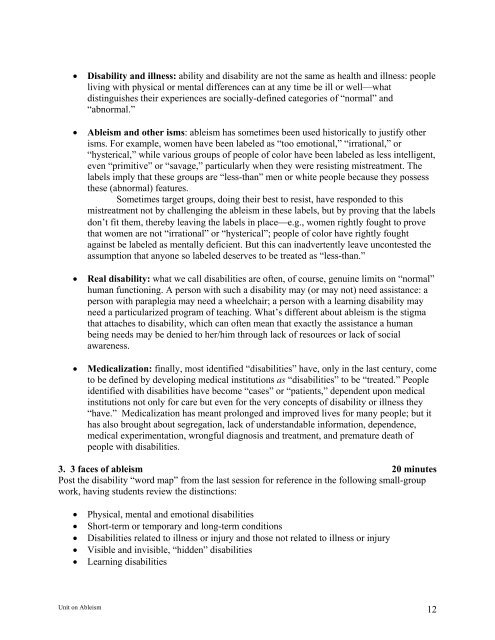
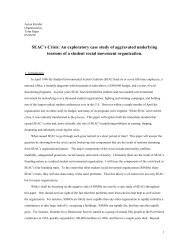

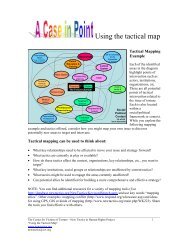
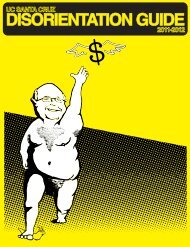

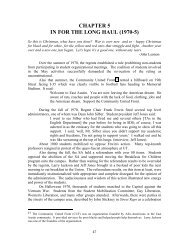
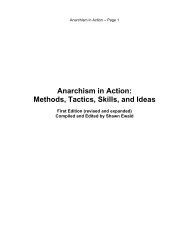

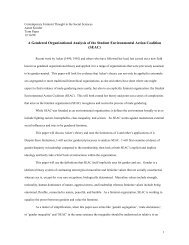


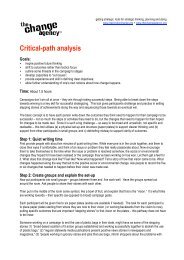

![Meaningful Student Involvement Research Guide [pdf] - SoundOut](https://img.yumpu.com/38822556/1/190x231/meaningful-student-involvement-research-guide-pdf-soundout.jpg?quality=85)